SCEPTICISM SCEPTICISM

Victoria University announces plans to sell oil well
NEWS | PAGE 03
Self-diagnosing: navigating the fine line
OPINIONS | PAGE 06
Top five reasons I’ve heard people believe in flat Earth
STRANDED | PAGE 16


Victoria University announces plans to sell oil well
NEWS | PAGE 03
Self-diagnosing: navigating the fine line
OPINIONS | PAGE 06
Top five reasons I’ve heard people believe in flat Earth
STRANDED | PAGE 16
1000’s of great books in all subject areas + CDs, DVDs and vinyl at bargain prices! e latest ction + hard-to- nd antiquarian volumes!
Proceeds support the Victoria College Library and students.
LOCATION
OLD VIC (University of Toronto)
91 Charles Street West (Museum Subway)
Contact: vic.booksale@utoronto.ca tinyurl.com/vicbooksale
THURSDAY
2 PM – 7 PM
First Day Only – Admission $5 Students Free with ID
FRIDAY 10AM – 7 PM
SATURDAY 11 AM – 5 PM
SUNDAY 11 AM – 5 PM
MONDAY 10 AM – 7 PM Half-price sale!
As we navigate an age characterised by an abundance of information and the rapid dissemination of content, scepticism has emerged as a crucial tool for navigating the vast amounts of data that surrounds us. However, scepticism can function as a double-edged sword. While it serves a purpose for critical thinking, it can easily tip into cynicism if not wielded judiciously. In this article, we delve into the art of healthy scepticism, exploring how doubt and open-mindedness can be balanced to create a more thoughtful and informed perspective. We will examine the importance of maintaining this equilibrium, especially in the context of news consumption, and provide practical guidance for readers on how to approach the news with a healthy dose of scepticism.
Scepticism, at its core, is a valuable intellectual tool. It encourages us to question, to probe deeper, and to seek evidence before accepting claims as truth. In a world of misinformation and fake news abound, scepticism serves as a protective shield against deception and manipulation. It is a reminder that not everything
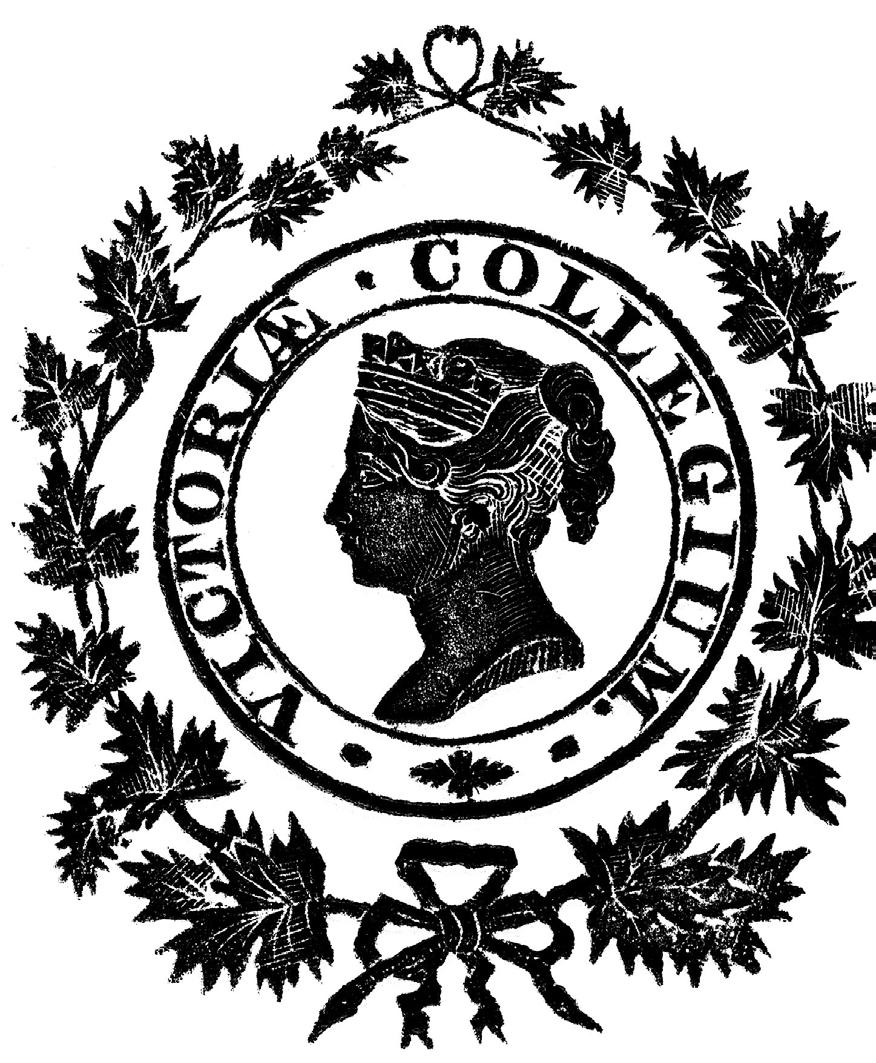
we encounter is what it appears to be. is is relevant to how we consume news because an increasing number of students receive their news through social media. e censorship of news content on social media can also contribute to paranoia about what should be believed and what should be scrutinised.
However, scepticism becomes problematic when it morphs into cynicism, an unwavering belief that all information is suspect or untrustworthy. When we become excessively sceptical, we risk closing ourselves o from valuable insights and alternative perspectives. is closed-mindedness can hinder our personal growth and damage our relationships with others.
e key to healthy scepticism lies in nding the right balance between doubt and open-mindedness. Here are some strategies to help you strike that equilibrium:
1. Take the time to check your information: Before accepting or rejecting a claim, make an e ort to verify its accuracy. Cross-reference multiple reliable sources to con rm facts and gain a comprehensive understanding of the issue at hand.
2. Question your own biasses: Recognising that our personal beliefs and biasses can in uence our level of scepticism can be daunting. Be open to the possibility that your preconceptions might be wrong, and challenge them regularly. is does not mean that you should abandon all of your preconceptions, but rather that if information that challenges your beliefs rears its head, ask questions.
3. Consider multiple perspectives: Actively seek out diverse viewpoints on an issue. Engaging with di erent perspectives can help you develop a more nuanced understanding and avoid falling into the trap of con rmation bias.
4. Evaluate the source: Assess the credibility of the source providing the information. Reliable sources
have a history of accuracy and transparency, while questionable ones may lack transparency or have a clear bias. You should also consider that the sources you use may be biassed; in some instances that perspective may be helpful. However, it is important to check our understanding of a situation before we allow it to in uence our actions.
5. Stay informed: Keep up-to-date with current events and issues. e more informed you are, the better equipped you'll be to discern reliable information from falsehoods.
Practical application: news consumption
In today's fast-paced media landscape, news consumers are bombarded with information from a multitude of sources. Here's how to apply healthy scepticism to your news consumption:
1. Diversify your sources: Avoid relying solely on one news outlet. Consume news from a variety of sources with di erent perspectives to gain a more well-rounded view of current events.
2. Fact-check: Don't take headlines or social media posts at face value. Fact-check stories and claims before sharing them with others.
3. Beware of emotional manipulation: Be cautious of news stories designed to evoke strong emotional responses. ese may be sensationalised.
4. Engage in constructive discussions: Encourage open, respectful exchanges with others who have di erent viewpoints. is can help you re ne your own understanding and identify weak arguments or misinformation.
Healthy scepticism is the art of nding the delicate balance between doubt and open-mindedness. It empowers us to think critically, question assumptions, and make informed decisions. When applied to news consumption, it helps us navigate the complex landscape of information available to us with con dence and discernment. By cultivating this art, we can become more thoughtful and informed
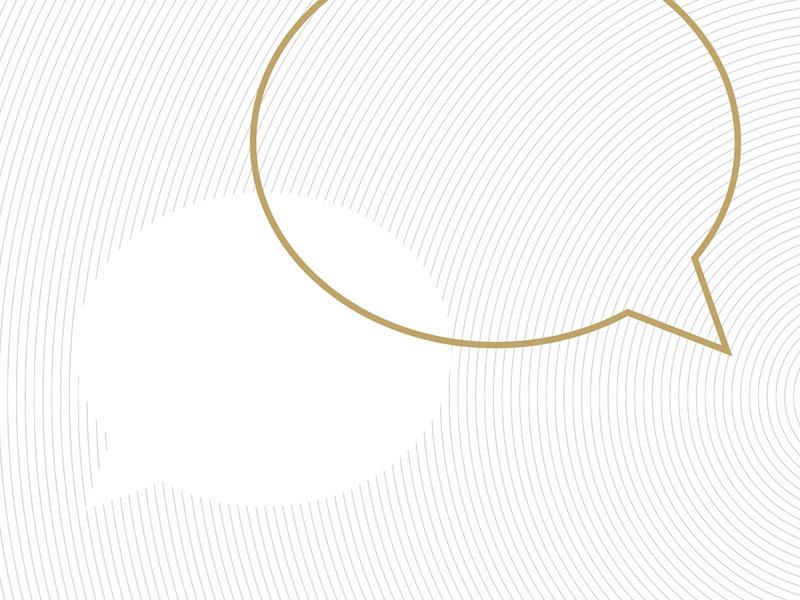
Scepticism is a tool for questioning and challenging the information we encounter, but it is also a powerful force for driving social change. In a world rife with social and political issues, sceptics play a crucial role in promoting progress by scrutinising the status quo and demanding accountability. is article delves into the relationship between scepticism and activism, highlighting how scepticism's critical lens can be harnessed to a ect meaningful change. rough real-world examples and insights, we explore scepticism's pivotal role in shaping a more just and equitable society.
At its core, scepticism is about asking questions and demanding evidence. When applied to societal norms, policies, and practices, suspicion becomes a driving force for change. Sceptics challenge the
PHOTO | SARA QADOUMIaccepted understandings and question whether the current state of a airs truly serves the best interests of all members of society.

One of the most iconic examples of scepticism in activism is the Civil Rights Movement in the United States during the 1950s and 1960s. Sceptics within this movement questioned the time's deeply entrenched racial segregation and discrimination. Leaders like Martin Luther King Jr. challenged the status quo by asking critical questions about segregation's moral and legal foundations. eir resistance fueled a movement that led to signi cant legislative and social change.
Sceptics in activism are watchdogs of accountability. ey scrutinise those in power, demanding transparency and honesty. By holding institutions and individuals accountable for their actions, sceptics help ensure that those responsible for societal decisions are committed to answering to the public.
Scepticism in action: investigative journalism
Investigative journalists epitomise scepticism in action. ey relentlessly seek the truth, often uncovering corruption, abuse of power, and injustices. Investigative reporting has led to the exposure of scandals, the resignation of public o cials, and policy reforms, showcasing the transformative potential of healthy scepticism.
Sceptics can be well-informed advocates for change. ey recognise the importance of basing their arguments on sound evidence and well-reasoned arguments. is commitment to intellectual rigour strengthens the impact of their activism, as it resonates with those who may be sceptical of the proposed changes.
Environmental activists use scepticism to challenge policies and practices that harm the planet. ey rely on scienti c evidence to advocate for climate action and conservation e orts. e scrutiny applied to industries and governments has led to increased awareness and policy changes to address environmental issues.
e sceptic's role in social change is pivotal, as scepticism catalyses questioning the status quo, promoting accountability, and fostering informed advocacy. Sceptics within various social and political movements have played a vital role in shaping a more just and equitable society. By continuing to harness the power of scepticism, individuals and groups can drive meaningful change and ensure that the values of transparency, justice, and equality remain at the forefront of our collective e orts. In an era where scepticism is not just an intellectual exercise but a force for social progress, it's clear that sceptics can be catalysts for a better tomorrow. However, that implies that those who choose to become sceptics for change do so with good intention and ethical practices.
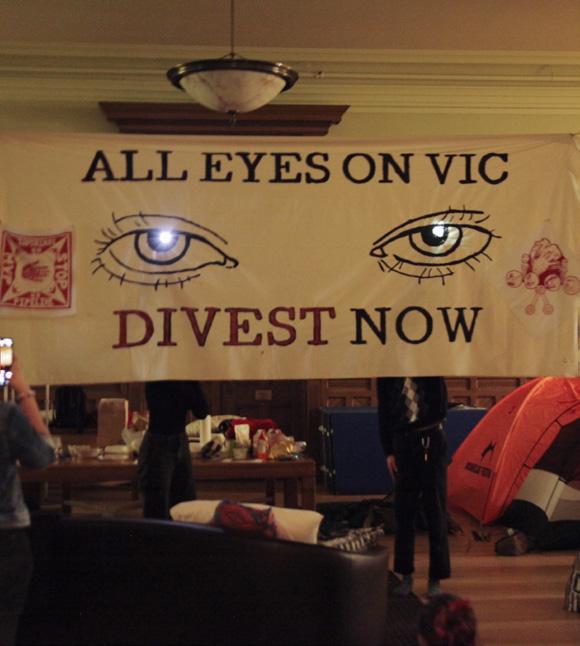 MICHAEL ELSAESSER FEATURES EDITOR
MICHAEL ELSAESSER FEATURES EDITOR
After many years of student lobbying, Victoria University announced to e Strand on September 6th that the Board of Regents (BoR) has voted to move forward with selling the Weyburn Oil Well. An email statement to e Strand wrote, “As part of Victoria University’s commitment to ‘intensifying sustainability initiatives across the entire university,’ as articulated in our ve-year Strategic Framework, and in alignment with its goal to divest from fossil fuels by 2030, the Board of Regents has approved the sale of a piece of land in Weyburn, Saskatchewan that has an oil well on its property.” Discussions surrounding the Weyburn property increased following an article in e Strand last January.
e statement from Victoria University continued: “ e property had been bequeathed to Victoria University in 2003. Planning is currently underway to determine how the proceeds for the sale, which will remain as part of the endowment, may contribute to further sustainability e orts on campus.” e Weyburn Property, with its farm and oil well, was donated by the estate of Mary Mound eld along with $3.9 million in stocks (which is equivalent to around $6.76 million adjusted for in ation). A majority of the donation was directed towards the creation and maintenance of the Vic One program.
According to the Barrel of Oil Equivalent Report, which tracks the oil and gas industry, the oil well owned by Victoria University is located in the so-called “Weyburn Unit,” which is controlled by Whitecap Resources Inc. It is important to note that this Weyburn Unit sits on the historical territory of many Indigenous peoples, such as the Očhéthi Šakówin, the Niitsítpiis-stahkoii Blackfoot, the Assiniboine, and the Michif Piyii. Whitecap Resources identi es itself as “a Canadian clean energy company;” yet, in 2022 they produced an average of over 144 thousand barrels of oil and natural gas per day (a 25 percent increase from the year before). e Report continued that Vic’s oil well speci cally produced around 19 barrels of oil and natural gas per day during the rst two months of the year, and that, “income net to Victoria University ... was approximately $94,500, or $567,000 on an annualized basis.” It nished by stating that cash o erings for the oil well ended this past June 22. Victoria University has not yet publicly shared the exact nature of any o ers they received for the property.
Atlas Changulani, the current VUSAC Sustainability Commissioner, commented in an o cial statement to e Strand that, “ is decision is yet another victory for student advocacy—it’s yet more proof of the power of sustained solidarity and direct action.” ey continued that, “Nonetheless, I’m disappointed that the Board has chosen to sell the oil well and not decommission it. It’s clear that
the BoR continues to put pro t over people and [the] planet. We cannot let this stand. I urge the BoR to take this as a chance to do better. Instead of attempting to greenwash their image, I urge the Vic Administration to put the pro ts garnered from this sale toward genuine climate action instead of false solutions, and toward a ordable student housing and food security.”
ey nished by stating, “I also urge students to remember that this ght is not yet over. is is undeniably another student win, but we must keep up the pressure and continue to demand better: for ourselves, our communities, and our collective futures.”
e BoR has not publicly stated to whom they will be selling the land and the oil well, nor the speci c initiatives to which they will direct the revenue from the sale. Many students are still calling for the oil well to be shut down rather than sold o to continue operations, as activists await further details about Victoria University’s divestment plans.
EDITORS-IN-CHIEF editors@thestrand.ca
MANAGING EDITOR managing@thestrand.ca
BUSINESS MANAGER business@thestrand.ca

WEB web@thestrand.ca
NEWS news@thestrand.ca

OPINIONS opinions@thestrand.ca
FEATURES features@thestrand.ca
SCIENCE science@thestrand.ca
ARTS AND CULTURE artsandculture@thestrand.ca
STRANDED stranded@thestrand.ca
POETRY poetry@thestrand.ca
COPYEDITING copy@thestrand.ca
DESIGN design@thestrand.ca
PHOTO photo@thestrand.ca
ART art@thestrand.ca
PODCAST strandcast@thestrand.ca
SOCIAL MEDIA socialmedia@thestrand.ca
EDITORIAL ASSISTANTS
ASSOCIATE EDITORS
FEATURES


CHARMAINE YU
ARTS AND CULTURE
SAKURA ARMSTRONG
COPYEDITING
VACANT
NEWS VACANT
PHOTO VACANT
WEB MATHULA MUHUNDAN
SHELLEY YAO L LA CARR
VICTORIA ALLDER VY LE ZINDZISWA MALANCA
STEPH GYIMAH M CHAEL ELSAESSER KIERAN GUIMOND DANA LEE CELENA HO ANYA SHEN KYLEEANNE WOOD

CHLOE LOUNG
WENDY WAN
SARA QADOUM
RAQUEL LEWIN
CHELSEY WANG
MUSKAAN AGGARWAL
ISHA RIZWAN VACANT
OPINIONS
ROMINA EMTYAZ
SCIENCE VACANT
STRANDED VACANT
DESIGN

VACANT
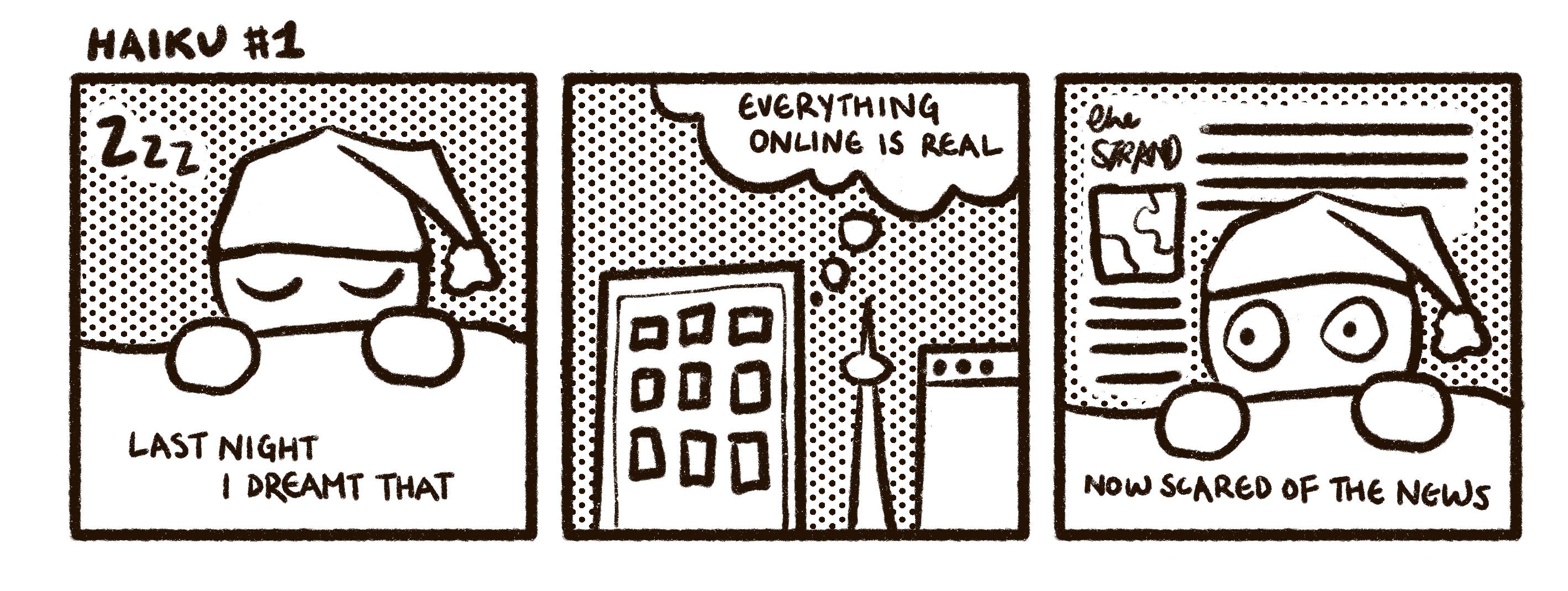
PODCAST VACANT
The Strand has been the newspaper of record for Victoria University since 1953. It is published 12 times a year with a circulation of 800 and is distributed in Victoria University buildings and across the University of Toronto’s St. George campus.
The Strand flagrantly enjoys its editorial autonomy and is committed to acting as an agent of constructive social change. As such, we will not publish material deemed to exhibit racism, sexism, homophobia, transphobia, ableism, or other oppressive language.
WWW.THESTRAND.CA
When I told people that I had worked at a zoo, they didn’t know how to react. The entire time, I didn’t know how to feel. As someone who loves animals and cares about the survival of other species on our planet, I saw the darker side of the industry that we call Animal Management. It made me hesitant to say that I worked at a zoo. It made me question the reality of human involvement in animal care and I grew sceptical of the purpose of cages. As months turned into a year, my view became more nuanced. My hesitations and concerns were solidified even more.

Let's back up a little. My name is Rashmi Ryan-Brundin. I am a third-year political science student at UofT. Last year, I took the year off school to travel and gain some work experience. I ended up working in conservation wildlife education for the Denver Zoo, an AZA-accredited facility, which is an animal zoological foundation in Denver, Colorado. My job included a variety of things: educating the public on species biology, wildlife and conservation methodology, the care of exotic animals, and zoo functions and practices.
I loved my job! I woke up every morning, fed the zebras, talked about the amazing river hippo, snuggled for selfies with our black rhino, waded my way through stingray pools, practised flight training with some of the world's most exotic birds, and sat next to our silverback gorillas and Sumatran orangutans during lunch. It was a childhood dream to be around some of the world's most endangered yet smartest and most beautiful animals. I will forever be grateful for my job and the time I spent at the Denver Zoo.
Before I launch into why zoos are more complex than you might think, there are a couple of terms we use in the industry that you should be aware of. The first was mentioned earlier: the AZA, also known as the Association of Zoos and aquariums. The AZA is an organisation setting the highest standard of care for zoological and aquarium facilities within the United States, Canada, and around the world. Zoos and Aquariums get tested once every five years for their accreditation. Tests are days long where experts in animal care, conservation education, and zoo functions are invited out to observe the function of the facility. The AZA also sets standards for animal habitat requirements, food nutrition, enrichment, etc., for exotic animals and animal care.
The Species Survival Plan (SSP) is a data configuration program that considers all the animals in AZA-accredited facilities to manage animal space within facilities and specialises in breeding and the survival of endangered animals to grow captive populations. Think of the SSP like a dating app for all the animals in AZA-accredited facilities to match and breed so that they can grow populations to avoid inbreeding. That's also a lot of species! The Denver Zoo has over 3,000 animals and there are over 230 AZA-accredited facilities!
Okay, now that we understand those terms, let’s try and understand why zoos are problematic in our society. I am sure you are familiar with the moral argument: animals are incredibly intelligent, keeping them behind bars is wrong because they don’t have access to their natural space, which can lead to high levels of depression and fighting amongst species in zoos. We will call the moral argument the ‘Blackfish’ argument,
after the controversial SeaWorld documentary about orcas. I believe all of that is completely fair game. From what I have learned, some animals at the Denver Zoo are depressed. I have seen the lions in the Denver Zoo fight so aggressively in a confined space that one of them was hospitalised. This argument brings in the idea that animals are just like us—you wouldn’t like to be in a cage and neither do they. A current AZA-accredited facility in Colorado is being sued by an animal rights activist group for this very reason—questioning the care and management of their elephants.
Not only is that true, but the SSP and AZA work together for breeding. Animals and their offspring are worth a lot of money and the trading and breeding of them generates revenue, despite hesitations for moving species. Zookeepers have little say in the moving of their own animals, which is cause for concern, especially when breaking up offspring from mothers. The key here is that the offspring stay in zoological facilities; in captivity, they are not offered the time to be in the wild. It takes generations and numbers for animals to be reintroduced into the wild (which is the end goal of the SSP). However, these animals are valuable to keep in zoo facilities (everyone wants to see the new baby orangutan, rhino, or jaguar), they won’t release them to rebuild wild populations.
meeting the basic standards needed for animal care. There's a lot more I could say here about the day-to-day functions of zoos that are problematic, but that sums up the general ideology behind zoos and builds on the moral argument for not having animals in cages. However, there is a side to zoos I saw since working there that I had no idea about.
It is required for AZA-accredited facilities to use some percentage of their budget for conservation work with wild species locally and internationally. Two million of the Denver Zoo’s budget works with local communities in Colorado around the American bison population and internationally, with frogs in Peru and Przewalski's horses in Mongolia.
Zoos connect people to wildlife in a new way. A lot of the species in zoo facilities span around the world and you can go to your local zoo to see them in your backyard. This is an amazing opportunity, especially for kids to gain an understanding of the world around them and how small we are in comparison. Zoos promote animal and wildlife education, giving the population steps and ways to reduce risk to animal populations and work with local communities to help save animal species. Zoos also give fun facts and anecdotes to connect people to animals.
Not to mention, the SSP works to manage zoo populations and breeding programs. This allows for the management of species that have gone extinct in the wild and also, helps the care of these animals and their populations. We would be facing a more severe extinction crisis now without specified human intervention breeding programs. It is a huge win for conservation and a way for the next generation to see a rhino, because zoos and scientists have not only figured out the best way for them to breed but have also put a tremendous amount of resources into finding the best approaches to care for young animals.
Don’t worry, zoos are great at making sure the words and phrasing they use make it all seem like a smooth and “animal-based choice.” Let me clarify: zoos are meticulously purposeful about the wording and phrasing used when it comes to the general public to boost their image. They are not “captive animals,” they are in “human care.” These exhibits are not “cages,” but “homes.” This is not a “zoo industry,” it is an “accredited zoo community.” An animal has not escaped (a natural behaviour when in captivity), it has “accessed an area it is not supposed to be in.” There is a clear lack of acknowledgment and truth behind these animals being in captivity and being wild animals. As staff, we are given a list of around 30 terms we are told not to use to describe zoos. This is concerning for a lot of reasons and it's hard to use the tagline phrasing, which sometimes feels like propaganda and not the reality of what the animals face.
It is also important to remember that just because AZA is the highest standard of care does not mean it's the best standard of care. AZA has a lot of work to do when it comes to the space management of animals and requiring them to be in pairs and groups versus solitary. At the Denver Zoo, we have two Grévy's zebras living together, when in reality, herds of these species range from 20 to 30 (a fact the Denver Zoo writes on its own website); it is AZA accredited, even without
Keepers genuinely care about their animals and respect them. They care about animal welfare and dedicate their life to the animals they work with. I have seen and heard stories of keepers sleeping in back areas with animals who are sick, got out of an operation, or just moved to a new facility. I have heard stories of keepers staying up all night to make sure that a baby zoo animal is breathing and healthy. Especially if an animal has passed, what the mourning and grieving keepers go through is intense and they view each and every animal like an individual they have lost.
So, where do we go from here about the implementation and survival of zoos? One may disagree with the idea of holding the world's smartest and most well-adapted animals in captivity for human enjoyment, but I believe we have hit a point in the development of climate change, the utilisation of the earth's natural resources, along with the exponential rise of the human population—animals have never been more threatened now than they have before. Without human intervention and active work in the rehabilitation of populations, wildlife, and conservation education, many animal species would go extinct. That being said, zoo and aquarium facilities (even AZA-accredited ones) have a lot of growth and development work to be done surrounding animal care standards and future projects with animal management in correlation with wild populations.
Why the public should remain sceptical about zoosPHOTO | RASHMI RYAN-BRUNDIN
In an age when information is readily accessible at our ngertips, self-diagnosing has become a prevalent phenomenon. Whether it’s Googling symptoms or consulting online forums, such as Reddit or Quora, individuals are increasingly taking their health into their own hands. However, is self-diagnosing reasonable or understandable? is question is at the heart of a growing debate, and while there are valid arguments on both sides, it’s crucial to consider the nuances and risks associated with this contentious issue.
Let’s begin by acknowledging that the desire to self-diagnose often arises from genuine concerns about our health. People seek to gain a better understanding of their bodies and minds, especially when faced with puzzling or persistent symptoms. In such cases, selfdiagnosing can serve as a valuable starting point for research and self-awareness. It empowers individuals to become active participants in their healthcare journey, fostering a sense of autonomy and responsibility over their wellbeing.
Moreover, as university students, many of us do not have the time to seek formal help throughout the academic year. Subsequently, self-diagnosis through online platforms allows us to decide whether or not we need to allocate some time in our packed schedules for in-person consultations. It is important to note that despite Canada's universal healthcare system, accessing its resources can often be challenging. Over recent decades, healthcare wait times have seen a substantial increase, reaching a peak of approximately 27 weeks when seeking professional assistance. In cases involving nonCanadian citizens and international student, those individuals may encounter prohibitively high fees for accessing professional healthcare services. Given such circumstances, the decision to trust the internet with our physical and mental health may seem productive and even logical.
Even if the provided information comes from a reliable resource, such as an accredited medical journal, the margin for error and misapplication of symptoms to certain causes is high. erefore, when individuals like the self-proclaimed TikTok ‘therapists’—who do not go through any kind of screening process to prove their legitimacy—advise people on critical aspects of their
mental health, the potential for harm becomes a grave concern. In an era when digital platforms amplify voices without requisite expertise, individuals must exercise extreme caution to safeguard their physical and mental well-being. e appeal of easy answers and self-diagnoses can lead us down harmful paths, and it is in our collective interest to prioritise evidencebased, professional healthcare to ensure that our health decisions are well-informed and safe.
Furthermore, the Dunning-Kruger e ect, a cognitive bias in which individuals with little knowledge overestimate their expertise, can lead to false con dence in self-diagnoses— completely deterring them from ever contacting actual professionals. When individuals believe they have successfully self-diagnosed a medical condition, they may develop unwarranted con dence in their own assessment. is misplaced self-assuredness can deter them from seeking professional medical advice or treatment, believing they have all the answers. is overcon dence can be a serious roadblock to early intervention and appropriate care, potentially leading to more severe health issues down the line.
As mentioned earlier, self-diagnosing can produce anxiety and fear. When people encounter alarming symptoms or ambiguous health concerns online, they may leap to the worst possible conclusions. e fear of a severe or life-threatening condition can lead to heightened stress and anxiety, which, ironically, may exacerbate physical symptoms and create a cycle of health-related distress. is emotional toll can have a detrimental impact on an individual’s overall well-being, further underscoring the need for caution when selfdiagnosing.

So, how do we strike a balance? e answer lies in responsible self-diagnosing. First and foremost, individuals should approach selfdiagnosing with caution. It's essential to remember that while some symptoms may seem indicative of a speci c condition, they can also be related to numerous other factors. e internet should be a tool for information, not a substitute for professional medical advice. Seek guidance from a healthcare provider who can evaluate your symptoms comprehensively and provide an accurate diagnosis. Another key aspect of responsible self-diagnosing is being aware of the limits of one’s knowledge. While self-education is commendable, it should complement, not replace, professional expertise. So, the next time a list of symptoms show up on your TikTok For You page, those symptoms do not correlate with or cause a certain condition.
It is also important to be wary of sharing self-diagnoses and information on our personal medical conditions with others. Posting personal health concerns on social media or online forums can perpetuate misinformation and lead others astray. Instead, use such platforms to share experiences and seek support while emphasising the importance of consulting healthcare professionals.
Ultimately, despite the convenience of simply Googling your symptoms rather than having to endure the pain of calling your doctor or waiting for hours in the emergency room, the risks outweigh the comfort. Even though the digital age is currently in almost all areas of our lives, our health is not something to be gambled with.
I like a good bar.
I never really got a chance to experience going to bars when I turned 19, as it was just before Covid thrust the world into a global lockdown. Now at 21 years old and with the pandemic hopefully behind us, I’ve been catching up.
I’ve got a few favourite spots that I like to go to, but there is one thing they all have in common: most are o campus. Not only that, but they are damn pricey.
Now, this isn’t a piece lamenting in ation or corporate pro teering—that’s for someone else to write. is article asks the simple question: why doesn’t UofT have more college-operated bars?
Really, think about it. Why doesn’t the
university set up its own interconnected system of college bars? It seems like a net win to me no matter how you look at it. UofT’s student body and, by extension, the university itself, craves community. It’s what pays the bills— not only in academic reputation but also the university’s willingness to connect people in a support network. Bars, in my opinion, help provide that connection by creating a space of equality where people can meet and have a good time.
You might be asking: “James, doesn’t UofT provide spaces for students to connect, like libraries, lounges, and student clubs? Why the hell would they spend the cash on a campus bar?”
My answer to that question is simple: atmosphere.
No, I’m not talking about mood lighting or what kind of scented candle is being used this week. I’m talking about the underlying feel
| SARA QADOUMIof the place. Bars have a di erent atmosphere than libraries, student lounges, or even student clubs. Libraries, for example, want you to silo your academic su ering in the stacks, keeping your head down with your study group as you grind out some hellish econ assignment. at doesn’t provide a place to really vent or let loose. Even though lounges provide an air of more relaxed camaraderie, they too still restrict you as some people might be using the space to study or decompress. ere’s nothing wrong with that, but sometimes you need a spot to blow o steam.
Bars have that. ey have an implicit catharsis of wanting to escape the daily academic grind, whether you are drinking or not. It creates the means for students to nally release pent-up feelings of academic frustration in an environment where they won’t be judged too harshly. Not only that, but that act of collective venting creates some fairly strong bonds. One of the best feelings in the world, in my humble opinion, is nding someone to vent about the same thing with.
is helps create the community that the university—both the student body and academic body—wants, but can also help monetarily. If the university opens up student bars, it stands to make a good amount of money. ink about it. If you are o ering alcohol or beverages at a lower price than the local bars, you’ll have students ocking to those spots. You can then pocket that money and use it to fund other initiatives on campus (say, a better mental health network).
What spawned this article is the simple fact that e Cat’s Eye, Victoria College’s student lounge, announced through Instagram that they will be hosting a pub night within their walls. I was lucky to sign up for it as soon as the post was released and I encouraged my friends to do so as well.
e event was full within literal minutes.
at alone should tell you that students, at least at Vic, want to bring bars back to campus. If there is that much turnout for a pub night on campus, think about how glorious it would be if there were bars on campus.
I am incredibly hopeful that e Cat’s Eye returning to its roots (hopefully permanently) will make the university consider opening more bars across campus. I truly think that it can help facilitate connections and help all of us ght our academic demons.
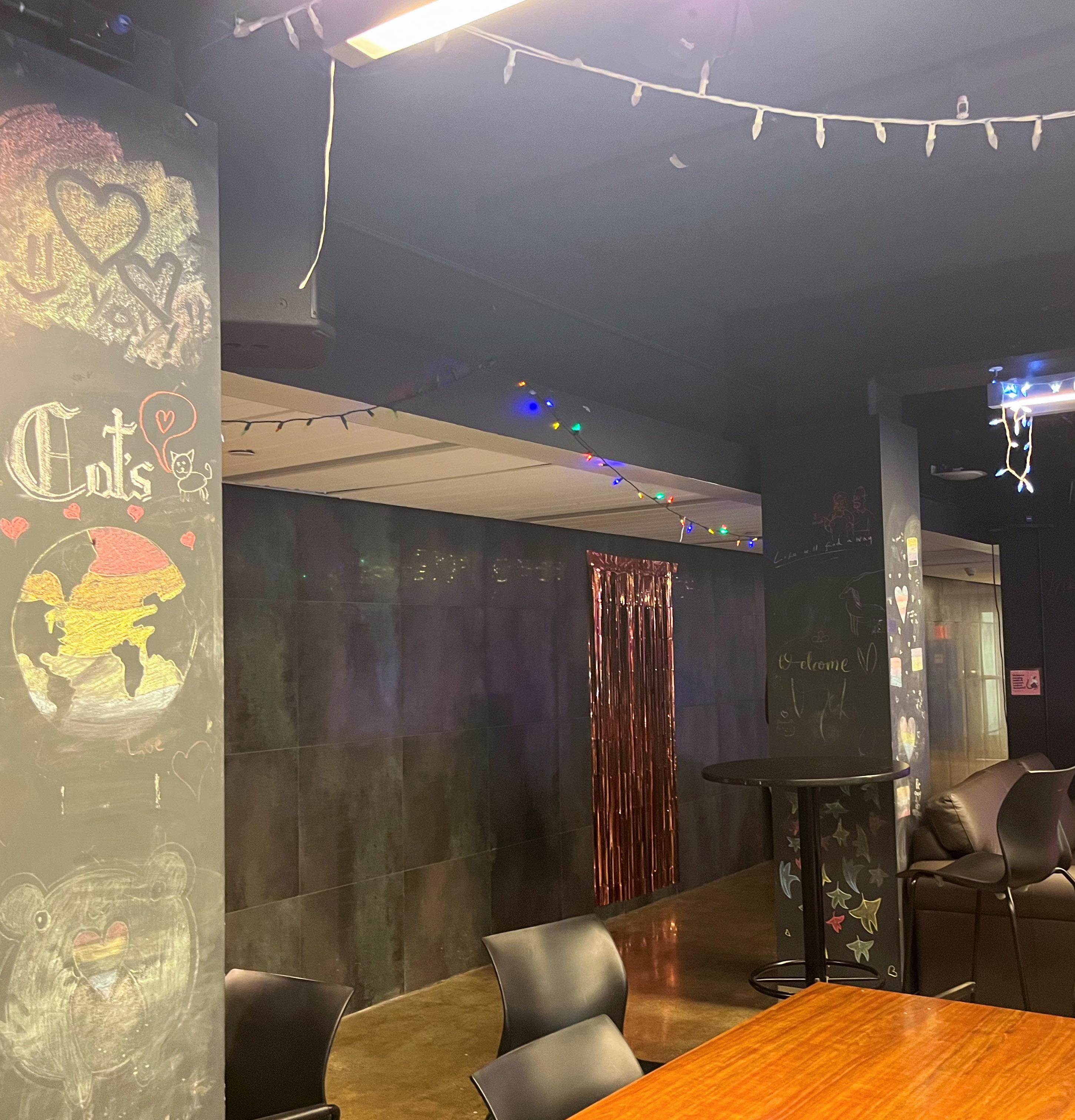

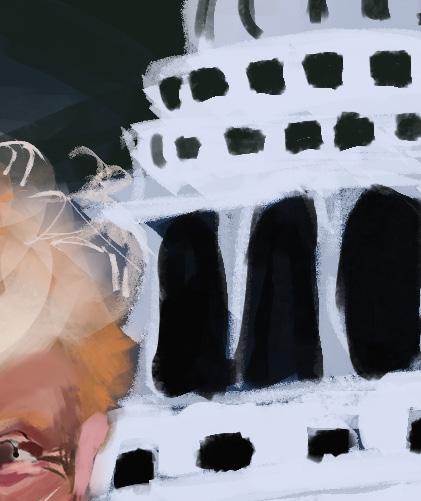
It would not be a university lecture if the professor did not spend the rst ten minutes encouraging their students to ask questions. “ ere is no such thing as a stupid question,” they would say—or at least a variation of those words— so that no one would leave the classroom with their doubts unanswered. For some, our high school teachers and family members used to echo a similar sentiment: the idea that if there is something we do not understand, we must seek to clarify it. Usually, this questioning is presented as fundamental for our individual wellbeing, as the material might be in the midterm, or we would lose something extremely important.
Nevertheless, when the issues we question extend from daily activities to the nature of our political and social climate—say, more systemic concerns—the necessity for clari cation increases. is is partially because these dilemmas concern how and why society operates the way it does, and since our personal interactions are tied to its inner workings, we must attempt to understand them. Most important, however, is the fact that the status quo, which constantly oppresses and silences the less powerful, bene ts from our lack of questions. If we refuse to challenge authority, we are choosing to be silently compliant with whatever they are trying to enforce, and our lack of doubt can be interpreted, just as it does in lecture, as acceptance.
To better illustrate how questioning the social norm is a good thing, we can turn our attention towards the implicit requirement of reliable technology in a university classroom. It
skim through any course syllabus to realise that computers are a necessary item to engage with class material, given that they operate as the primary source to submit assignments and prepare for lectures. Nonetheless, there is a small percentage of students (approximately 16%-19% in the United States) who lack access to dependable technology. is is referred to as the “digital gap,” which systematically favours those who can readily connect to the internet over those who cannot. ese students, who are mostly part of underrepresented minorities and low-income households, exhibit high levels of cell phone dependency as they do not own any other device that can e ciently manage the task at hand. Unfortunately, as many of us can attest, a mobile phone cannot compete with a computer when writing online assignments. is places disadvantaged students in a race they
cannot win. How can universities make their content more accessible to their own students? Is it fair to require computer usage to hand in assignments? To what extent can (and should) we rely on technology to succeed in university?
Questioning the necessity of reliable technology at university allows us to realise that not everyone can simply buy a laptop and that the system bene ts those who can. Within the broader educational system, we would see how elitism is a central theme of world education, where the myth of meritocracy promises success to the ‘best.’ Yet, social advantage predicts opportunity, which means that ‘being the best’ is inherently tied to economic wealth and cultural capital, which not everyone has in equal measure. It is only through challenging the norm that we can understand how and why this seemingly acceptable principle—the required usage of computers—is the symptom of a much larger issue that demands even more societal nonacceptance.
With this example in mind, I would like to introduce what we will from now on call a ‘healthy dose of scepticism.’ In other words, the extent to which we should be wary of authority and their suggestions because there may or may not be a trade-o we do not wish to partake in. is concept is better exempli ed when discussing public policy and government proposals, as they are the most obvious forms of authority. For instance, Doug Ford’s proposal to open 3,000 hectares of protected lands in Ontario’s Greenbelt to development has been presented as a solution to address the province’s housing crisis, but the truthfulness of this claim is up for questioning. First of all, multiple experts say his housing targets can be met elsewhere, which implies the Greenbelt can be left untouched at the same time that Ford meets his campaign promises. Secondly, there is proof that certain developers were favoured in a biassed process that tied them to the housing minister, despite the Premier’s assurances that there was no favouritism.
If we were to approach Ford’s claims without our healthy dose of scepticism, we would take everything he said as indisputable, whether we agreed with it or not. After all, he is an authority gure with the work and academic experience many of us do not have. Yet, if his statements were unchallenged, we would be supporting unnecessary policies—like building on the Greenbelt when those goals can be met elsewhere. If we refused to critically analyse the Ford government’s policies (as well as many others), we might be accepting what they say as truthful with no concern for the nature and veracity of its contents, acting as a silent bystander that abstains from challenging authority even when their integrity should be examined. e easiest question to ask, then, would be: “What interests, personal or otherwise, are they trying to uphold?”
Nevertheless, this doubt of authority cannot and must not be mistaken for simple contrarianism. Disagreeing with authority demands a critical process nurtured by research, understanding, and occasionally, a bit of common sense. Otherwise, we risk turning our healthy dose of scepticism into a sceptic overdose that creates a worldview completely detached from reality, heeding no attention to objective facts, scienti c research, or even the principles of human empathy. As a result, the largest problem with this overdose is that its nonexistent critical ties to factual understanding makes it extremely dangerous, as indiscriminate non-acceptance transcends the ght for an improved society and centres exclusively on personal gain.
I want to bring forth one of the most astounding moments in recent history to fully illustrate the risks of a sceptic overdose. During 2020, the eyes of thousands of people— American and non-American alike—were xed on the US presidential race, which came amidst the already devastating COVID-19 pandemic, the multitudinous Black Lives Matter protests,
and were also tied to the controversial gurehead of the Republican Party. Idolised by some and despised by others, Donald Trump’s loss of a second presidential term spurred a series of events that, to this day, remain mind-blowing. Even after major national and international news outlets had declared Joe Biden the presidential winner, Trump addressed the country and stated, according to the White House Archive, that “If you count the legal votes, I easily win. If you count the illegal votes, they can try to steal the election from us.” He went on to detail how that had exactly happened, xating on mail-in ballots and claiming that they lacked veri cation measures, which made the votes prone to alteration. In Trump’s mind, his electoral win had been illegitimately taken from him, and the political system he always criticised had e ectively done what it had always sought to achieve: protect itself from any outside threat.
Now, if it had just been Trump who adamantly refused to recognise his defeat, it would have been almost comical. After all, the notion of refusing to accept the facts, despite how much evidence there is to support them, is as ridiculous as it sounds. Nonetheless, there were a multitude of people who supported his claims, not because they were right, but because Trump was the one who made them. ese followers, who have been with him since he rst rose to power in 2016, tend to meet at least one of the following social characteristics: they primarily identify as men who did not go to college, do not think they have a political voice, and they wish to protect their white in-group from non-white outsiders. As non-college educated citizens, their rate of full-time employment fell from 76 percent in 1990 to 68 percent in 2013, which has led to a meaningful decrease in their real wages. In many instances, they have been trampled by the surge in globalisation, which has left them feeling voiceless and powerless in the face of the political status quo.
ere is obviously a sector of Trumpism that is born out of misinformation and prejudice, easily radicalised by a populist leader that embodies their own racist, sexist, and nationalistic beliefs. But those who experience social disadvantage cannot be ignored, as the system has failed them, too. Not to the same degree that it has structurally oppressed the Black and Indigenous communities, or to the extent it has excluded Latinx immigrants, but enough for them to grow dissatis ed by it. at is, while the white men who voted for Trump are part of the majority group in the United States, bene tting from a system built speci cally for their own needs and desires, they are also disadvantaged by a status quo that prioritises economic wealth over social wellbeing. ese citizens felt like they were losing, and Trump promised them to win. Even if we disagree with their willingness to ignore Trumpism’s violent message, it is possible to state that their vote was cast in a challenge to the political establishment—the traditional political authority—because they were wary of its promises. at is, they were sceptical.
However, even if their scepticism was problematic when they refused to acknowledge Trump’s discourse as dangerous, they overdosed
on it when they rejected undeniable facts. First, in order to exercise a healthy dose of scepticism, it is necessary to critically approach politicians and their message because challenging authority is not su cient in its simple existence. In other words, just because someone questions the status quo does not mean their approach is correct nor that their challenge is posed in the correct terms. Trump, despite his position as a political outsider, was an accused sexual predator and a known misogynist whose claims should have been examined twice before anyone subscribed to the MAGA banner. Many did not approach his campaign critically, even as his term became tainted by misinformation. To Trump’s followers, he is the end-all be-all of American politics, regardless of what anyone—however, experienced—argued.
is overdose spread like wild re, and by January 6, it was already too late. Trump’s calls for election overturn and to “never give up” and “never concede” when there is ‘theft’ involved triggered a crowd of thousands to vandalise and illegally breach the US Capitol. Some of these individuals were armed with Molotov cocktails and tactical gear, waving their MAGA ag as they chanted for former Vice President Mike Pence to be hanged. Undeniably violent, this angry crowd wanted to ‘restore’ electoral results, relying on the words of a man that denounced a corrupt world he did not fully understand. Most signi cantly, these people were radicalised to such a degree that uncritical non-acceptance became the norm: they opposed the political establishment—embodied in this case by the American electoral system—simply because it was the political establishment. ey allowed populism to feed on their dissatisfaction and supported it when Trump pursued his personal gains, refusing to recognise that while the system is unfair, mere contrarianism will not su ce.
Henceforth, after explaining—in perhaps extensive detail—the importance of a healthy dose of scepticism, I want to highlight the necessity to question authority always through a critical lens. After all, nonconformity will constantly be an essential component when addressing our socio-political system, as challenging its structure requires us to discern the many places where it fails. rough the Trump scenario, I wish to present a cautionary tale: doubts and questions are only positive once we have developed them well, for they can morph into a sceptic overdose that refuses to acknowledge when authority does something right.
If we were to simply advocate for contrarianism, we risk becoming people who refuse to acknowledge the truth because it does not t our worldview. is is something we need to be aware of as Republican points of discourse taint government o cials, slowly radicalising Canadian discontent into the Trucker Convoy of 2022—or what could continue to exacerbate in the upcoming years. After all, if we lack the ability to critically analyse government promises, the system would bene t, not from our lack of questions but from our inability to ask the right ones.

e Strand: What year are you and what are your majors?
Naomi: I’m going into third year, and my major is psychology.
What is your research?
ere's something that's been studied for a long time with a probe tone method that's pretty well known— people widely agree on certain sounds to t with a musical tonality. People agree that it ts when they rate it on a scale of one to seven when they read it on scale and t degrees. But what's di erent about our experiment is using reaction time to see if the degree of t changes how we process it and facilitate it. One thing we're looking for is do we react faster to t and not t.
It would have signi cant implications for processing degrees of tting.
Why is this an important thing to research and how can this information be used in the future?
It's important for the eld of music cognition, which has some applications outside of music. ings like tone when people speak, that is related to music cognition in terms of musical t. It also relates to perception, sensation, and stu like that. And why humans understand music to be music. It's a part of the brain that's not that well understood, which is why music cognition is such a small eld. Nobody's ever really looked at reaction time and the probe tone method.
How did you get this position?
I applied to a work-study. I work at a lab called the Music Cognition Lab at UofT Scarborough in Dr.
Mark Schmuckler's lab. For one of the experiments I was helping a PhD student and another one was my professor's experiment.
What advice do you have for students looking to do research?
I think apply to a lot of places. It's so competitive, especially in psychology, which is a really oversaturated eld. I think also apply to things that you don't think you'd get. If it's a good job, a lot of those cons are worth it. In the grand scheme of things, it was de nitely worth it. Apply to places you think you might not want; be open minded to things that might deter you. I emailed everybody I applied to and actually got lots of interviews, so don't be afraid to be annoying, actually reach out directly.
is interview has been edited and condensed for clarity.
We have entered an era many are calling “the golden age of innovation,” where we are seeing a boom in the creation of new technology, such as faster computers and more advanced phones. In turn, these have provided us with increased access to information and knowledge. It could be expected that this has led to a decrease in misinformation online as individuals are better able to access raw data and facts. Unfortunately, it is exactly the opposite. Misinformation remains rampant across social media, having very real and potentially deadly consequences.
Simply put, misinformation is false or misleading information. It’s a similar issue to fake news or disinformation, which is created purposely to mislead individuals. While these issues have always existed, social media and the rise of technology have created platforms where misinformation is able to spread quicker and be perpetuated more than ever before.
Take a look at TikTok. Even if you don’t use it personally, we all have been exposed to it. In fact, it’s kind of impossible to escape. It’s harmless at rst glance, but unfortunately, the platform is a breeding ground for science misinformation. Just consider the raw milk trend. With videos on the topic having over 126 million views, it is safe to say that it has spread across the platform with a vengeance. For those who have not yet encountered it, proponents of this movement support the consumption of unpasteurised (raw) milk,
touting health bene ts and nutritional qualities.
Pasteurisation is a process through which raw milk is heated to a speci c temperature for a speci c amount of time. is process is performed to kill a myriad of pathogens that can be found in raw milk, including E. coli, Salmonella, and Listeria. Obviously, none of that stu would be fun to catch. ose who support the drinking of raw milk will make post after post online claiming that the pasteurisation process rids the milk of vitamins, minerals, and enzymes and thus, you should drink it unpasteurised. is is, of course, incorrect and has been proven wrong many times over. For instance, a study showed that proteins from pasteurised milk were utilised in metabolic processes in humans the same as proteins from micro ltration milk, which is unheated. at is to say, the heating process did not impact the metabolisation of milk proteins. e science indicates that pasteurisation is completely safe and is in fact necessary to protect you from the nasty pathogens found in raw milk. Experts are, very loudly, crying that you should NOT drink raw milk.
Despite this wealth of research indicating the bene ts of pasteurisation, misinformation continues to spread, and some individuals are continuing to encourage consumption of raw milk despite its dangers. And unfortunately, raw milk is only one example of misinformation spreading on TikTok. Why is misinformation so prevalent?
e structure of social media apps may actually
contribute to this rampant spread of misinformation. A study from Yale and the University of Southern California demonstrated that the reward structure of social media encourages users to habitually share news, especially that which attracts the attention of other individuals. What this means is that as people share posts that attract them—maybe with a ashy headline or imagery—they form a habit that is triggered every time they see a similar post. Pretty soon they are sharing misinformation consistently, spreading it across a platform. In the end, these social media apps themselves foster the propagation of science misinformation, regardless of the impact on the health and wellness of its users. Another reason that misinformation may spread so rapidly is lack of science and research literacy. A study published in Frontiers in Psychology demonstrated that individuals with poor health literacy and negative prior beliefs about an assigned health topic did not adequately examine what sources were available, instead demonstrating bias when selecting which sources they examine. In contrast, those with high health literacy and negative prior beliefs spent more time examining available sources and even examined web pages that presented contrasting opinions. is goes to show that individuals who were not taught science (or health) literacy may attempt to fact check information presented on social media, but instead fall into a trap of con rming incorrect science through bias. ey may interact more with posts that con rm their beliefs, spreading misinformation across the app. Overall, this study demonstrates how easily misinformation can be propagated across social media. I’ve only presented two reasons that misinformation is spreading, but there could be hundreds more contributing to this issue.
Despite how grim this article has made it out to be, there are ways that we can combat misinformation. By not interacting (liking, sharing, commenting, etc.) with science misinformation on social media, we can work to prevent its spread across apps. It’s equally as important to work on educating individuals on what science is, how research works, and how to understand evidence and results. All these things increase an individual’s science literacy, providing them with the skills they need to recognise misinformation online. Finally, it is important to remember that social media is not a trusted source of news. Encourage people you know to do more rigorous research into topics they see online, and to listen to evidence-based science and medicine.
Misinformation is not just an educational crisis; it can cause real harm to individuals if they are encouraged to consume dangerous products like raw milk. Now more than ever, it is important to combat misinformation online and listen to quali ed researchers. Remember, science saves lives.

Louis Pasteur rolls in his grave every time someone mentions raw milk

On September 23, the City of Toronto will celebrate the seventeenth year of Nuit Blanche—a night that unites the community of Toronto and beyond to experience art installations throughout the city for free. Nuit Blanche is a celebrated tradition that garners community, recognition, and consideration of the art scene in Toronto, often provides a chance for young and emerging artists to showcase their work and speak up on topics and issues that the visual arts intersect with and advocate for. is year’s theme is entitled Breaking Ground, opening up conversations around climate, urban life, and responsibility. Although events like Nuit Blanche provides space for art to take up in the city, both literally and guratively, the festival's persistence has now become an act of resistance towards consistent and growing scepticism regarding the future of arts and culture in Toronto and beyond.
In 2019, Ontario’s arts and culture sector represented more than $28 billion or 3.5 percent of the province’s gross domestic product. Despite its popularity amongst tourists and locals—as well as its vitality in beginning conversations, addressing current issues, and building
art spaces by and for communities—the visual arts sector in Ontario is experiencing threats that insinuate it is not an area of importance. e rise of arti cial intelligence is leading to large corporations using robots instead of paying humans for art-related elds. e funding for the visual arts is dire and a ordable studio spaces are being lost. With these issues looming in the background, for me, the experience of Nuit Blanche will be as bittersweet as it is awe-inspiring.
Nuit Blanche counters the bleakness surrounding the future of arts, gathering people together to celebrate artistic excellence within and beyond the city, and acting as a reminder of why Toronto needs art and artists to thrive. For the theme this year, artists will explore themes pertaining to climate change, nature, environment, and responsibility. Although Nuit Blanche celebrates wellknown and celebrated artists, it provides a rare opportunity for emerging artists to showcase their work, and their thoughts, by transforming public spaces that are visited by the masses. What makes this event so impactful is its ability to bring so many people together to appreciate art, think critically about what art says and how it impacts them, and learn. Nuit Blanche shows the public that art expands so far beyond beauty into the realms of the
radical, the political, and the academic. So why is it not seen this way by decision makers?
is year, I will be enjoying Nuit Blanche by visiting key Toronto sites that are participating, such as 401 Richmond and Stackt Market, but I will also be walking, and re ecting, across the city. I encourage everyone to visit Nuit Blanche, and to think about the impact that art has on our lives every day. Artistic acts remain acts of change, courage, and community. I believe that choosing to focus on the environment during a climate crisis re ects this. is year, Nuit Blanche needs supporters more than ever. While you walk, re ect on the deeper implications of each piece, each positioning, and each material. ink about what the art says to you, think about why we need Nuit Blanche, about why we need art.
For more information and a map that highlights all exhibitions, visit the City of Toronto website.
In a world of scepticism about the future of art, Nuit Blanche brings us together in the presentPHOTO | PAUL BICA
In a time of record high costs of living, increasing nihilist belief systems, and a generation of kids doomed to live in their parent’s basements, it comes as little surprise that Gen Z workers are taking strides to create more dynamic and equal workspaces for the future.
Within various social media platforms exists a discourse between Gen Z-ers who are confronting the reality that has been laid out for them since birth: the world is ending and nothing can be done about it. While some call them nihilists, they prefer the term 'realists'. What has often de ned Gen Z is their sole familiarity with a post-9/11 world, their un ltered exposure to ghastly world events, and their sense of doom invoked by an ever-declining economy and irreversible climate change. To say they have little tolerance for nonsense and apathy is an immense understatement. So, when it comes to how they are treated in the workplace, they are not afraid to walk across the street and work for your competitor instead.
Born from parents who lived out their early adulthoods during the late twentieth century, Gen Z-ers have heard countless tales about hard work, dedication, and passivity in the workplace in order to provide for themselves. However, with parents who cannot provide a mortgage loan for their children as a result of the ever-increasing costs of living, the idea of nancial prosperity or property ownership has become ubiquitously unachievable.
Take, for example, Toronto rent. In 1990, the average cost of a one-bedroom apartment was approximately $559.00 a month, with minimum wage at $5.40. In 2023, the average cost of a one-bedroom apartment in Toronto was reported at $2,620.00, with minimum wage at $15.50.
While the minimum wage has increased, it has not surged as exponentially as rent. Likewise, there has been an equally drastic increase in costs for food, transportation, electricity, insurance, taxes, internet, and cellphone services.
Often described as soft or di cult to work with, Gen Z-ers encourage discourse and empathy around mental health within the workplace. Often considered replaceable by employers, Gen Z-ers have grown what some might consider to be a sense of entitlement wherein the employers are now too considered just as replaceable: “Fire me and I’ll work for your enemy. I can’t a ord anything either way.” Gen Z’s lack of emotional dedication, the lack of brand loyalty, and the mental separation from their places of work has been cultivated by the freedom of the world ending: “If I can’t a ord to live, then I can at least a ord to speak my mind and deny the dogma of the man.” Many Gen Z-ers ask themselves what the incentive is for hard work and maintaining an apathetic attitude towards disparaging power dynamics. ey’re solemnly depressed and they are not afraid to express their dissatisfaction and assert their right to feel that way towards their peers and their employers because it’s not like they’re getting paid liveable wages anyway.

SAKURA ARMSTRONG ARTS AND CULTURE ASSOCIATE

is past summer, I had the privilege of becoming a human AI detector while teaching a creative writing course to middle schoolers at my old school. e rst instance of AI use was subtle: a girl submitting an assignment had suspiciously good grammar and cadence with that distinct computer tinniness. We told her to stop and she quickly did.
It was the second incident though, that still shines in my memory. A day after requesting that the students spend the next week working on a three-page story, a document appeared in the Google Classroom assignment inbox. inking some overenthusiastic student had already nished, I opened the document. After a page of scrolling, I began to grow suspicious of the uncomfortably formal, overly detailed writing. After another page of scrolling, I attempted to scroll to the bottom of the document while questioning its integrity, only to realize it was 79 pages long.
I laughed at the absurdity of submitting such a glaringly fake document to our class and agged the document for the teacher. But I couldn’t stop wondering, what made her decide to do that? Our class was incredibly informal and we weren’t necessarily grading on quality rather than e ort, so why bother?
After issuing a classwide warning against the use of AI tools, the cases slowed down. e debate on AI usage in
September 20
GLAM Welcoming Social: 1:00pm to 3:00pm at e Cat’s Eye
September 22
e Cat's Eye Pub Night: 7:00pm to 1:00am at e Cat's Eye
September 27
RealTalk Meeting: 7:30pm at e Copper Room
September 29
Musical eatre Karaoke: 7:00pm to 10:00pm at e Cat's Eye
the classroom challenges teachers everywhere, particularly teachers who primarily deal with written assignments. e question of whether it should be banned entirely or embraced as the future can't be clearly answered. New York City Public Schools initially banned ChatGPT from their Wi-Fi networks but quickly reversed that after seeing examples of successful AI integration in classrooms. Other districts around the United States quickly adopted AI into their curriculums to show students how they work, hoping to prevent future misuse of the tools.
e concern with AI tools is strong as well as the questions regarding academic integrity and the bias of AI tools themselves as they are programmed by mostly white, male programmers. One example of the problematic bias is the AI system used by Google Photos sorting 80 photos of a Black person in a park into a folder titled ‘Gorillas’ in their camera roll. It’s these types of stories that continue to raise apprehensions about bringing these tools into learning environments for young people everywhere.
Personally, I think AI is a fascinating tool when used appropriately, which seems to be the general consensus among educators. I’m sure in several years we’ll start to see the impacts of AI use among students when young people are either incredibly talented or completely inept at producing their own writing. I think AI’s adoption into education will truly shape the next generation’s views on creativity and writing. e rami cations of AI in the workforce will be fascinating, if not a little frightening to see.
The debate on ChatGPT from the perspective of a kind-of notreally teacherPHOTO | DANA LEE
One American student’s perspective at a labour march in Toronto
Meandering around mobilised, enlivened movements and unions, I soak up raw people power as my skin bathes in the gleaming sun. is moment represents my rst big inhalation of Canadian politics since moving here as a curious liberal Democrat. I make out colour-coded blocks by their spirit and stature. Zealous organisers o er their zines and manifestos for a couple of bucks apiece, eager to spread their gospel to onlookers.
In past years, I have enjoyed Labour Day as a day o and haven’t given much thought to its signi cance to workers and unions. On this Monday, immersed in waves of interconnected movements, I feel pulses of pride for these workers, their staunch supporters, and their resistance to complacent political leaders and structures. As I scan the crowd for a university group I know, I’m confronted by others, including the ‘communists’ and their ‘manifestos.’ I’m taken aback when they ask me whether I identify as one of them. Among these diverse yet allied groups, I feel encouraged to take a stand and speak my beliefs. Yet, I am undecided. My heart feels pulled to environmental advocacy organisations because they are the origin of my organising journey. I love progressive parties and their missions. I am idealistic in my political beliefs and more generally at heart. Still, I know that granting all residents in Canada basic necessities and insurance comes with

costs. A ordable housing projects impinge—or will likely eventually impinge—on safeguarded natural habitats and reservations. Spurring a green economy is not 'a-materialistic'. Considering these realities, I decided to be open to the many perspectives at this march. We are unquestionably linked by our belief in people and community.
As I drift between people, my heart sways with the beat of freedom and dignity present throughout the crowd. I am privileged enough to enjoy this day like many other days of my summer. At school, I get to learn about interesting people and ideas without the burden of nancial insecurity and stigma. What better reason that I come out and show solidarity with the larger population, I think. I hope to use the interdisciplinary knowledge that I’ve learned to create a purposeful life with genuine experiences. You don’t need to fully understand or preach your beliefs to get involved and show interest and support for worthy causes and groups. In an age when human rights are twiddled between the thumbs of devious leaders and their personnel, every act of protest reverberates. Momentarily, I spot a couple of participants proudly wearing the orange shirts I was initially looking for. I strike up a conversation with the club and grab a hold of their coordinated sign. At last, I feel like I’ve found some footing in this mosaic of movements and missions. My feet and my newfound energy drive me forward.


As a fantastical wild-whimsied witch— ose who hide behind their lovers
In shelters decorated with fancy words of devotion.
I’ve craved like they do,
But my love poems do not carry the same weight
No matter how many di erent ways I birth them.
In labour, I’ve delivered rhyming couplets at the end of each of my sonnets; I’ve had alliteration ripped from me by a doctor’s white-gloved hands; I’ve cradled the “like” and the “as” in my arms as if they were twins; And yet my lines are considered simply a chubby baby’s fat.
So dive into my words, that pooling puddle of letters at lay with me on the birthing bed. Let me sit back with my pounding feet sore from the motherhood that is writing And allow my words to ow uninhibited.
yesterday, nothing quite moved, and yet, sweeping the entire frequency range, well it’s mostly semantics, but curlicues of waveform-buzz seem just to touch lines of ight, and to clarify, let’s just say I’ve made quite the mess of the sugar-phosphate backbone, I mean, for now, leave it at ransomware, unless, do you ever feel as though no one tells, and so you continue, a bred-in-bone cartridge blackboxed within the… the…
what a strange and awful thing it is, to stand at the edge of a subway platform. overpriced ca eine in hand, worries in my shoulders, how can i learn to talk to my father? looking up at the atscreen tv on the dirty ttc walls: the one year anniversary of a war approaches. this is nothing new to humanity, carrying on with your own mundane worries, did i leave the kettle on? while a little girl loses her doll underneath the rubble that now is her house.
what a strange and awful life it is… i can’t believe i forgot my headphones at home.

I’m not quite sure what to call it, for example, the body is wholly insu cient, and merely a dead URL shed from wetware repetitiously torrented through a synaptic superimposition you might call, ok, so not you, but some pack movement of youness spliced single-helix with my, admittedly quite confusing, syntax, except, in the becoming-of-us, the data-payload seems to have set the spines askew, leaving the bracketing of script to decompose or accelerate the reduction of information into some intracranial drone, an utterly closed circuit of meat-proxies otherwise su used into the day-to-day ganglionic swivel, pivot, and, well, I want to add hand-hold, but we both know that can’t happen today, for one, remember, because
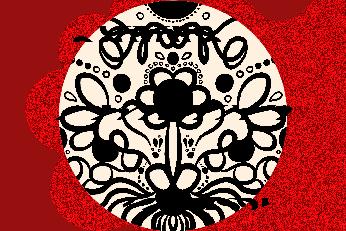

the sentiment. Like, what the heck Maddie!? ere is no way you enjoyed the two hours of hand cramps and searching the deep dark depths of your heavily ca einated brain to regurgitate all you've learned in the past two months. People like this are obviously lying.
Non-judgemental cats only exist in fairytales. Do you or a friend have a cat? Have you been subject to Whiskers' unimpressed and overly judgmental glares? Or Pumpkin's blatant disregard for your feelings as you enter a room? She will look directly at you, get up, turn, and op back down so you are now facing her rear end. First of all, why are all these cats named something adorable when they clearly have a grudge against everyone and everything? And secondly, you cannot tell me their so-called ‘pet owners’ are in charge of any cat-related situation. We all know your so-called feline ‘friends’ have a god complex and consume all main character energy for themselves.

Born co ee-drinkers are a myth.
Slightly controversial, but… no one starts out liking co ee! It is bitter, leaves your mouth dry, and requires substantial cream and sugar to make its acidity tolerable. No one likes co ee until they have been sleep-deprived, have a super tight deadline, or need to be up for an early morning lecture after pulling their rst all-nighter. Whatever the exhausting event was, they were pushed to their breaking point and ordered their rst doubledouble. It’s a slippery slope from there; you need less and less sugar or cream as you build up a tolerance, then the ca eine keeps you hooked. It’s truly the beginning of a toxic relationship.
People who claim they can e ectively study AND listen to music at the same time are gaslighting themselves.
Have you ever questioned the credibility of everyday phenomena? You nd yourself thinking, “ ere’s no way!” or “You have to be kidding” when someone tells you a story, you read something online, or you witness a wild scene. I assure you, your gut instinct is very wise, embrace your inner sceptic. Afterall, you are probably on to something.
Here are a few things that I am absolutely convinced are true, and you cannot convince me otherwise.
Missing keys… it’s not your fault! You must have a North American house hippo infestation. At the ever-convenient time that you are already running late for your lecture, part-time job, or visit
with a friend, do your keys, phone, or even your wallet seem to go missing? You scour your room only to nd them a half hour later and you are positive that there is no way that is where you left them. It is not your fault! You, my friend, may have an infestation of ittybitty North American house hippos running amuck in your dorm, stealing your keys to decorate their nests or your phone to play Tetris. Whatever those mischievous hippos are up to, it is not your fault that you are late.
People who actually "enjoyed" the midterm are lying.
Ever ask your peers how they felt about the midterm, only to have one of them say in a cheery voice, "Yeah, it was fun!" or "Yes, I really enjoyed it!" (Let's be honest, they are probably an English or Art History major.) en, they stand there and wait for you to return
ey are among us: those who claim they study best with headphones on, playlist at the ready, and music turned up. We’ve all heard and seen them, but does their music actually boost their productivity? I think not. Within ve minutes into one’s ‘study playlist,’ you will nd a song that’s an absolute banger and start dancing. It begins with a lip sync, then a head bop, and then an unavoidable compulsion to get out of your chair. Next thing you know, you’re dancing in E.J. Pratt Library. ere is no way this boosts anyone’s productivity, and if people like this do exist—if music does boost their productivity—then they should de nitely be feared.
For the sake of science, there is probably a 0.01 percent chance someone running late does not have a North American house hippo infestation, someone actually just likes co ee’s taste, a friendly cat (probably named Steve) exists, or someone can study with music (I stand by what I said about no one liking midterms). Even with this sliver of a chance—until adequate proof is given—I remain a sceptic.
Five things that I believe—without a shadow of a doubt—are true, until proven otherwise
ILLUSTRATION | CAMERON ASHLEY
Dear Sceptics, I see you. I get you. I, too, am sceptical of all of these things, but I will try to make some sense of them for you. ey should not exist, but yet they do, which means there is an answer. Celena always has the answer. Email me your burning questions at strandededitor@gmail.com and I will try my best.
Reader #1: Have you ever met a nice goose???

I don’t believe these creatures are what we think they are. I, for one, have never met a nice goose before. I used to throw Cheerios at them on the lakeside. ey would honk at me. It was loud, obnoxious, and aggressive. I was scared of them. As much as I wanted them to like me, their minds would remain unchanged. I never understood them until now. At the ripe age of 21 years old, I too, love eating dry cereal and honking loudly at people who stand too close to me. Nice geese do not exist because they are the true haters of the animal kingdom. Geese are like ducks, but if ducks hated their existence. ey serve no purpose other than to be haters, and I respect them for that. Geese are an immovable force and I do not possess the force to move them.
Reader #2: No way blue whales are the biggest animal ever to exist. No way.
As for blue whales, I agree. ere has to be something bigger right? Well, I am sad to report that the blue whale is certainly the biggest. As a registered whale expert, I can con rm this is true because of the salt water. Have you ever had those little tablets that you would put in a glass of water and after a while a sponge animal would expand? Blue whales reach this size because they are actually sponge animals in a little tablet that you purchase from the dollar store impulse section. ey absorb the salt and are able to grow into a really really really really really big thing. Whales also really like salt so this is why. is is a recent discovery made by me, and my sources are me. I will not elaborate further. Hope this helps!
Reader #3: Airplanes—we were not meant to y
I will never be able to understand planes, but let me try to explain them in the simplest terms. Big human bones are heavy. Planes go fast. Planes carry humans really fast and the wind goes whoosh and creates lift under the plane. Human bones are no longer heavy. Flying!
Reader #4: No way Celena is too busy to hang out with me that’s messed up
Um this is true. Sorry. Call again tomorrow to check for availability. xoxo
Reader #5: Registrars
is is most de nitely not about anyone in particular but I have spoken to a registrar from my college before and they made me burst into tears. But don’t fret! ere was another person that I spoke to who was extremely helpful, kind, and took their time explaining things to me. ere are useful registrars out there! Do not lose hope! Just don’t speak to the one that interrupts you mid-sentence to point out a cool pin on your jacket.
Reader #6: No way matter is not created nor destroyed. How do plants grow? How do PEOPLE grow ???
Yeah so this is actually because—
glimpse into my adventures as an undercover
with their fake calculus if you try to explain to them that just because a textbook image of the horizon is at, it does not mean the actual Earth is at (real conversation I’ve had).
I went undercover in my rst year on Facebook as ‘Judy Green’—who’s just looking to make friends on FB and learn more about the Flat Earth Society—and in doing so, I’ve encountered some WILD defences of pseudoscience, which I shall present to you right now.
1. If Earth is a globe, then how come I can see the end of my kitchen when I stand on the other side of the house?
a. is Flat Earther had trouble grasping the di erence between a literal 6400-km radius planet and a sevenmeter-long hallway. Someone failed eighth grade geometry!
4. Gravity is not real.
a. No comment on this tbh. Physicists around the world are crying in a corner right now. Isaac Newton is rolling in his grave.
is last one’s a personal favorite:

5. If the Moon’s supposed craters were caused by stu smashing into it for the last million years, then it should’ve been crushed by now, but it’s still there!! NASA is lying to us.
a. I genuinely have no idea what this has to do with Globe Earth, but apparently the MOON is under re for existing too. How DARE the Moon still be up there when it should have been smashed to bits over the last couple million years? e audacity, the gall, the gumption.
First year is a golden time for learning and exploration— learning how to navigate this huge, beautiful campus of ours, to not put your already shrunken jeans in the dryer on high heat, and to AVOID 9 AM classes at ALL COSTS. For me, however, it was also about getting in touch with my undercover online sleuth persona to unravel one of the deepest online mysteries of our time—the emergence and growing popularity of the pseudoscienti c ideology most commonly known as 'Flat Earth.'
We’ve all believed some bogus rumours at some point in our lives—that the moon landing was fake, that Northrop Frye has a McDonald’s in its basement (just kidding, that one’s true!!), or that Margaret Atwood gets to hunt one Vic student a year (JK that’s also true). But we do so for gits and shiggles usually (I hope). Flat Earthers, on the other hand, are dead serious,and they WILL ght you
2. e textbook image of the Earth’s landscape is at, therefore, the actual Earth is as well.
a. Some people have trouble grasping the concept of print and infographic simpli cation. Just because the children’s books you read when you were ve had stickgure characters with dots for eyes, doesn’t mean real humans look like that too! Some people, smh.
3. NASA is indoctrinating everyone to believe in 'Globe Earth.' a. Genuinely, I cannot imagine what the motive here would be. Like, what do you get out of lying to people about Earth’s shape? What would the bene t be? It would be cool to get a Steven Spielberg movie out of this—one the Flat Earthers could use as ammo for the serious debates they hold in FB comment sections.
b. I think they think the Moon is fake. Perhaps what we’re seeing now is a hologram of the Moon? Maybe someone drew it into the sky? I think that’d be mad talent. Gotta love what people’s minds come up with nowadays!
Anyway, I’ve heard plenty more, but I worry that sharing more of their theories will convince some of you of their pseudoscience, and I can’t risk that happening! Take their words with a grain of salt and stay sceptical of random people on the internet telling you about scienti c facts they found in a Facebook group chat moderated by a guy who can’t tell a textbook image from reality.
Stay safe my friends, the internet is a wild place.
Adriana